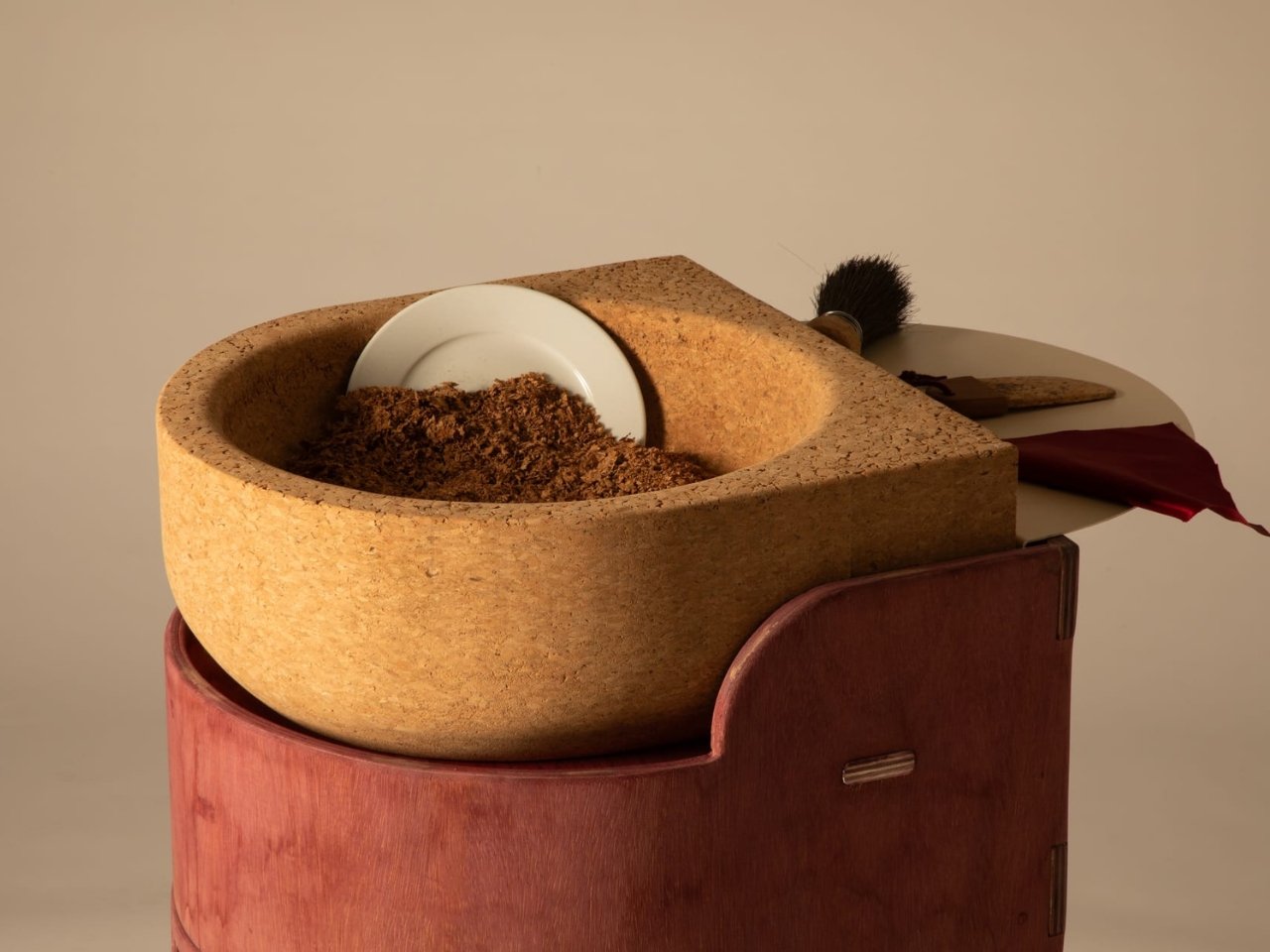Bindu, a Sanskrit word meaning droplet or point, is more than a symbol; it is the primordial seed, the wellspring from which all creation unfolds. In ancient Sanskrit cosmology, the bindu represents the source of consciousness, the beginning of form, and the pulse of intention. As a water droplet, it encapsulates the delicate balance between ephemeral presence and eternal origin, serving as a quiet metaphor for renewal, reverence, and the infinite within the minimal.
Akhil Krishnan’s Bindu design project invites us to reconsider our connection with water by reinterpreting everyday water rituals. Through a set of rhythmic, reflective objects—Pāvita, Sanchaya, and Kalasha—Bindu reveals the hidden narratives of consumption and consequence, fostering a mindful relationship with water as a living entity rather than a mere utility. Each object blends barefoot design thinking with Indigenous wisdom, challenging Western anthropocentric viewpoints and weaving cultural memory and history into contemporary design. These artefacts serve as poetic interventions that urge us to slow down and approach water with reverence and intention. By engaging the senses, Bindu’s designs disrupt routine habits and invite a deeper and more sustainable relationship with water, one shaped by recognition, ritual, and respect.
Designer: Akhil Krishnan
Pāvita is a reimagining of the humble act of dishwashing. It questions our reliance on water, synthetic cleaning agents, and plastic tools. Inspired by practices in water-scarce regions of India, especially Rajasthan, Pāvita draws on traditions that used natural, locally sourced materials for cleaning. At its core, it repurposes used wine corks and transforms them into a dry-cleaning medium. By replacing water with cork granules, Pāvita offers both an ecological intervention and a poetic gesture toward mindful domesticity.
Kalasha is a greywater vessel and wash bowl inspired by ancestral Indian water vessels like the Lota and Chilamchi. Designed for modern kitchens, Kalasha features a terracotta and charcoal filter, allowing users to reclaim and reuse water for non-potable tasks. This vessel ritualises everyday actions, encouraging measured use, ecological care, and quiet frugality. Kalasha not only makes our water consumption visible but also enables a second use of this precious resource, reminding us that water is the substance of life and death.
Sanchaya transforms the act of cooking into a ritual of conservation. This frugal tool captures steam by using a specially designed lid, which channels evaporated droplets into a ceramic reservoir. Inspired by ancestral distillation practices and topped with transparent glass, Sanchaya makes the invisible cycle of water visible. The collected water can be returned to the dish or used elsewhere, turning habit into intention and routine into reflection.
Bindu by Akhil Krishnan is both a collection of objects and an invitation to see water with new eyes. By blending tradition, ecological sensitivity, and poetic design, Bindu urges us to engage in rituals that honor water as a living, sacred force in our daily lives. This project is a timely reminder that even the simplest design can inspire behavioral change and nurture a deeper connection to the world around us.
The post Bindu design project rekindles our relationship with water through artful ritual first appeared on Yanko Design.

